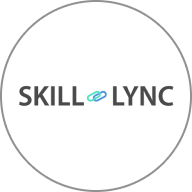Modified on
Simulating Real-World Applications with Simulink and Simscape: A Step-by-Step Guide

Skill-Lync
Welcome back to the Physical Modeling in Simscape with Simulink & MATLAB blog series! In this part, we’ll explore how Simulink enables engineers to model and simulate interconnected systems with ease. Simscape’s intuitive graphical environment makes it possible to create and analyze systems that combine electrical, mechanical, and hydraulic domains.
In this blog, we’ll focus on creating models for real-world applications, such as pump systems, and discuss how Simulink’s environment supports simulation workflows. From configuring input sources to evaluating energy flow, we’ll demonstrate how these tools can revolutionize engineering design.
The Simulink Environment: A Graphical Interface for Simulation
Simulink provides a graphical user interface (GUI) that simplifies the modeling process. Blocks in Simulink represent components of a system, such as:
- Signal Generators: Represent inputs like voltage or velocity.
- Subsystems: Combine smaller components into larger systems.
- Mathematical Functions: Represent equations like sin(ωt+ϕ)\sin(\omega t + \phi)sin(ωt+ϕ).
For example, a pump system can be modeled with the following components:
- Electrical System: A single-phase or three-phase power supply powers the motor.
- Motor Control: Converts AC to DC and regulates the motor’s speed.
- Mechanical System: A gearbox and pump connected to the motor’s shaft.
- Hydraulic System: Piping for fluid flow controlled by the pump.
Simulink allows users to configure parameters such as efficiency, gear ratios, and flow rates. For instance, a pump application might involve supplying 230V RMS at 50 Hz to a motor, with a flow rate requirement of 10 liters per minute. Users can simulate energy flow and analyze efficiencies at each stage, from the motor to the pump.
Pump Application: A Case Study
Consider a system where a pump is driven by a DC motor. The motor receives power from an AC-DC converter, and the output shaft drives the pump through a gearbox. Using Simulink, you can:
- Model the electrical system, including AC-DC conversion.
- Represent mechanical elements like the motor shaft and pump.
- Simulate flow rate and energy consumption under various conditions.
By connecting these components, you can study the entire system’s behavior, from input power to output flow. Simulink’s graphical environment provides real-time visualization of key metrics like torque, speed, and energy efficiency.
Conclusion
Simulink and Simscape are transforming how engineers model and simulate complex systems. By combining electrical, mechanical, and hydraulic domains, these tools offer unmatched flexibility and precision. Whether you’re designing a pump system, analyzing a motor drive, or modeling gearboxes, Simulink simplifies the process through its intuitive graphical interface.
This blog has shown how Simulink’s environment supports physical modeling and simulation, enabling engineers to explore real-world applications efficiently. Ready to dive deeper? Enroll in Skill-Lync’s Full Course on Simscape Training and take your skills to the next level. Stay tuned for more insights in the next blog, where we’ll discuss the nuances of system fidelity and modeling accuracy!
This blog is part of our ongoing Physical Modeling in Simscape with Simulink & MATLAB. If you missed the previous posts, check them out here.
Would you like to have a more interactive experience in Physical Modeling?
Skill-Lync has released a FREE comprehensive course covering Physical Modeling in Simscape with Simulink & MATLAB! Check it out here.
Check out our hands-on course today and add it to your list of skills!
Let’s get #IndustryReady together, one skill at a time!
Author
Uma Maheswari K
Author

Skill-Lync
Subscribe to Our Free Newsletter

Continue Reading
Related Blogs
Explore the fundamentals of vehicle dynamics and ultimate trends in the field from design and modeling to control with Skill Lync's exclusive course on the subject. Read about how Skill-Lync's CAE courses can help you get employed.
28 Jul 2020
In this article, we will briefly discuss the working, applications, and features of the one-dimensional systematic simulation tool, GT-Power, in Emission Control Strategy, engine calibration, hybrid vehicle modeling. Read about how Skill-Lync's CAE courses can help you get employed.
28 Jul 2020
This article offers a brief introduction to the globally accepted standard of Geometric Dimensioning and Tolerancing, and its importance for the entire manufacturing process. Read about how Skill-Lync's CAE courses can help you get employed.
28 Jul 2020
In this blog we will read about Going a step into Biomechanics and how Skill-Lync's CAE course will help you get employed.
09 May 2020
The powertrain is the most prominent source of vibrations that affects the driving experience for the people on board. This blog from Skill-Lync examines these vibrations to help enhance that experience.
21 Aug 2020
Author

Skill-Lync
Subscribe to Our Free Newsletter

Continue Reading
Related Blogs
Explore the fundamentals of vehicle dynamics and ultimate trends in the field from design and modeling to control with Skill Lync's exclusive course on the subject. Read about how Skill-Lync's CAE courses can help you get employed.
28 Jul 2020
In this article, we will briefly discuss the working, applications, and features of the one-dimensional systematic simulation tool, GT-Power, in Emission Control Strategy, engine calibration, hybrid vehicle modeling. Read about how Skill-Lync's CAE courses can help you get employed.
28 Jul 2020
This article offers a brief introduction to the globally accepted standard of Geometric Dimensioning and Tolerancing, and its importance for the entire manufacturing process. Read about how Skill-Lync's CAE courses can help you get employed.
28 Jul 2020
In this blog we will read about Going a step into Biomechanics and how Skill-Lync's CAE course will help you get employed.
09 May 2020
The powertrain is the most prominent source of vibrations that affects the driving experience for the people on board. This blog from Skill-Lync examines these vibrations to help enhance that experience.
21 Aug 2020
Related Courses
